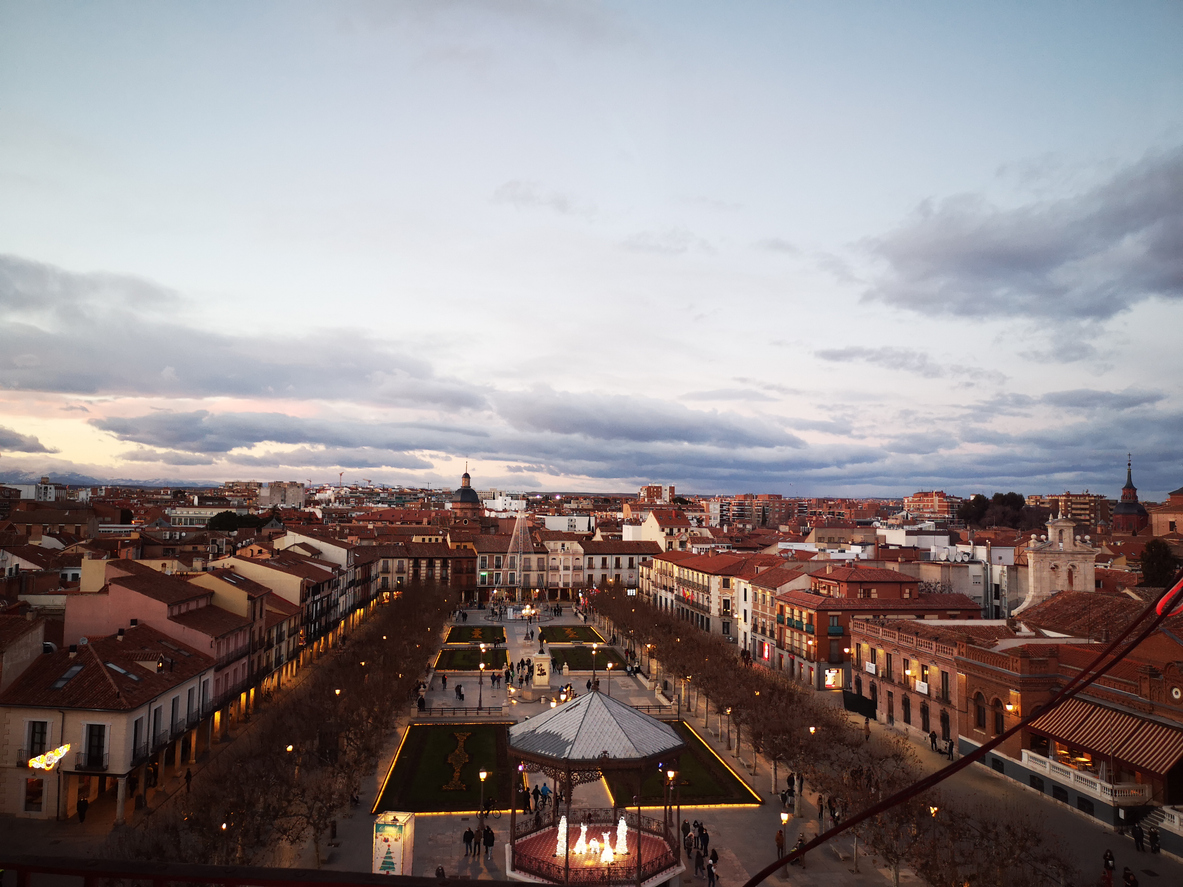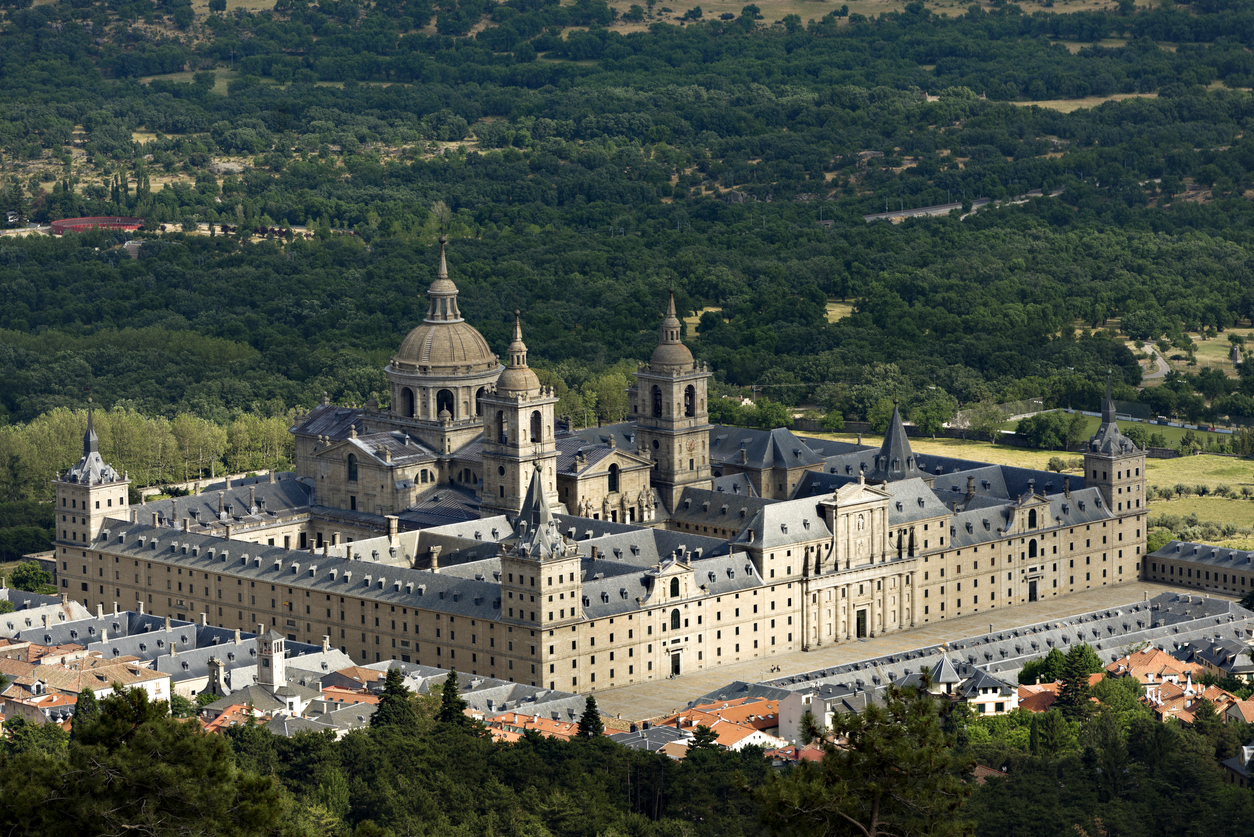The Community of Madrid, one of Spain´s 17 autonomous communities, a bit over 8,000 square kilometres (3,100 sq. miles) with the city of Madrid at its centre, is home to five UNESCO World Heritage Sites: the capital´s “Landscape of Light“; San Lorenzo del Escorial, Alcalá de Henares, Aranjuez, and Hayedo de Montejo. Between them, they´re positively packed with a wealth of culture, art, cuisine, and history, along with abundant nature and hiking opportunities. Here´s a quick look at what you can expect in each:

Landscape of Light: Many of the Capital City´s Most Iconic Attractions
Spain´s newest UNESCO site was declared in 2021 because of its architectural monuments, green zones, and artistic and scientific icons, with its primary zones being the Paseo del Prado, El Retiro, and the Los Jerónimos district. The Prado includes of course the monumental eponymous art museum; the Royal Botanical Garden; the Puerta de Recoletos; the Neptune, Apollo, and especially the iconic Cibeles fountains. Just east of here is the Puerta del Alcalá, one of the old city gates (1778), and the city´s grandest park, El Retiro, whose attractions include numerous gardens, a rowing lake, the city´s oldest still-standing tree (1633), various historic pavilions like the Crystal Palace (above), these days hosting art exhibitions, and various statues such as the memorable Fountain of the Fallen Angel, with the world´s only statue of Satan. This is also part of the neighbourhood of Jerónimos, whose other notable landmarks includ the early-16th-century Gothic church of San Jerónimo el Real and the Royal Observatory of Madrid, founded in 1790, which in addition to still serving as the seat of the Spanish National Observatory has an interesting museum of antique astronomical instruments.

Alcalá de Henares, Epicentre of Spain´s ´Golden Century´
Just a half-hour drive or 40 minutes by train from downtown Madrid, this illustrious city is known as the home of “Spain´s Shakespeare“, the 16th-century novelist Miguel de Cervantes (1547-1616), and you can visit his birthplace and home. Other distinguished Spanish playwrights and authors associated with the “Golden Century” (the 16th) here include Tirso de Molina, Lope de Vega, and Francisco de Quevedo, and you can still see some of their works performed at the Corral de Comedias, one of Europe´s oldest still existing theatres, dating back to 1602. Alcalá is also known as the “City of Knowledge” because it´s the site of the eponymous university, one of the world´s oldest (1293), and parts of which are open to visitors. The Community of Madrid´s Archaeological and Paleontological Museum is also located here, as are the ruins of Complutum, the original Roman settlement from which Alcalá grew.
Also do stop by the Parador de Alcalá, part of the chain of Spain´s distinguished public-private inns and hotels, many in historic structures. This one was formed out of three 17th-century convent schools, and still preserve many of lovely old features such as the cloister and the “Carved Garden” (and check out the spa, under vaulted ceiling of the old church). Even if you don´t stay overnight, come for a visit and/or a meal
Here are elsewhere in Alcalá you must try local culinary specialities such as garlic soup, migas (breadcrumbs cooked with garlic and chorizo sausage), rosquillas (little glazed doughnuts), and costrada (puff pastry filled with cream and meringue). You can go tapas-bar hopping, or if you´re here the first week of February, gorge yourself at the annual Semana Gastronómica (Culinary Week).

The Austere Grandeur of El Escorial
Also 40 minutes from Madrid, either driving or by train. the town of San Lorenzo de El Escorial up in the Guadarrama Mountains is home to a charming old town as well as natural spots like Herrería Forest, Abantos Pine Grove, and the Luis Ceballos Arboretum. But the main attraction is most definitely the massive Royal Monastery of El Escorial. Completed in 1584 for King Phillip II, the world´s largest Renaissance building takes two hours to walk through (and with a tour guide, can take even longer) with highlights including the palaces, the library, the basilica, the gardens, and the Pantheon of Kings.
Another important issue that you should leave tied up is the ideal place to eat, if you allow us, we recommend the Montia restaurant. A place where wild cuisine abounds, and that holds the most important recognition that defines culinary excellence, the Michelin star.
Furthermore, like any good mountain town located in the mountains, San Lorenzo has multiple routes to explore on foot, by bicycle, or on horseback. The Camping El Escorial-Rascafría boasts the steepest gradient of all the routes and is also the longest at 117.5 kilometers (73 miles), while the most popular (and toughest) is Monte Abantos (19.6km/6½ mi.).
By the way, the eating up here is fantastic as well, and one restaurant we can especially recomend is Montia, whose exquisite farm-and-forest-to-table “wild cuisine” has won it a well-deserved Michelin star.
The Royal (and Natural) Glories of Aranjuez
Some 40-50 minutes by car or train from Madrid, on the banks of the Tagus River, the site called the Cultural Landscape of Aranjuez perfectly combines landscape, architectural, and artistic masterpieces from Spain´s various historical eras. The old town’s current layout dates from the 17th- and 18th-century reigns of Philip V and Charles III, who transformed the it into a summer centre of the monarchy where the architecture goes hand in hand with woods and gardens, all in line with the aesthetic taste of the Enlightenment. Besides the Royal Palace, you can also take in the Royal Barges Museum, the bull ring, and elaborate gardens such as the Jardín del Principe (including the smaller, neoclassical Casa del Labrador palace), Jardín de la Isla, and Jardín del Parterre. There are also a number of walking/hiking routes in and around the city, the longest of which is 48.3km (30 mi.)
The city is a delight all year round, but special times to consider include the beginning of September with the Motín Festival, mid-October´s Early Music Festival. And from late April to early July and mid-September to mid-October, the Tren de la Fresa (Strawberry Train) is a charming option: a half dozen 19th-century wooden cars leaving from Madrid´s old Las Delicias station, now the Railroad Museum.
Hayedo de Montejo Forest
For something that´s all natural, just a half-hour drive from Madrid you´ll find yourself in a grand, ancient, 250-hectare (617-acre) forest of oak and especially beech trees where a large part is dedicated to outdoor activities, especially hiking. We recommend especially the Hayedo de Montejo- Senda del Río route, 2.3km (just under 1½ mi.) long and with a gradient of 46 metres (151 feet). For something a little longer, hike the 11.7km (7¼ mi.) of the Camino de Riaza.
Fly to Madrid with Iberia and check out these marvelous sites and much more – it will be a holiday to remember!

